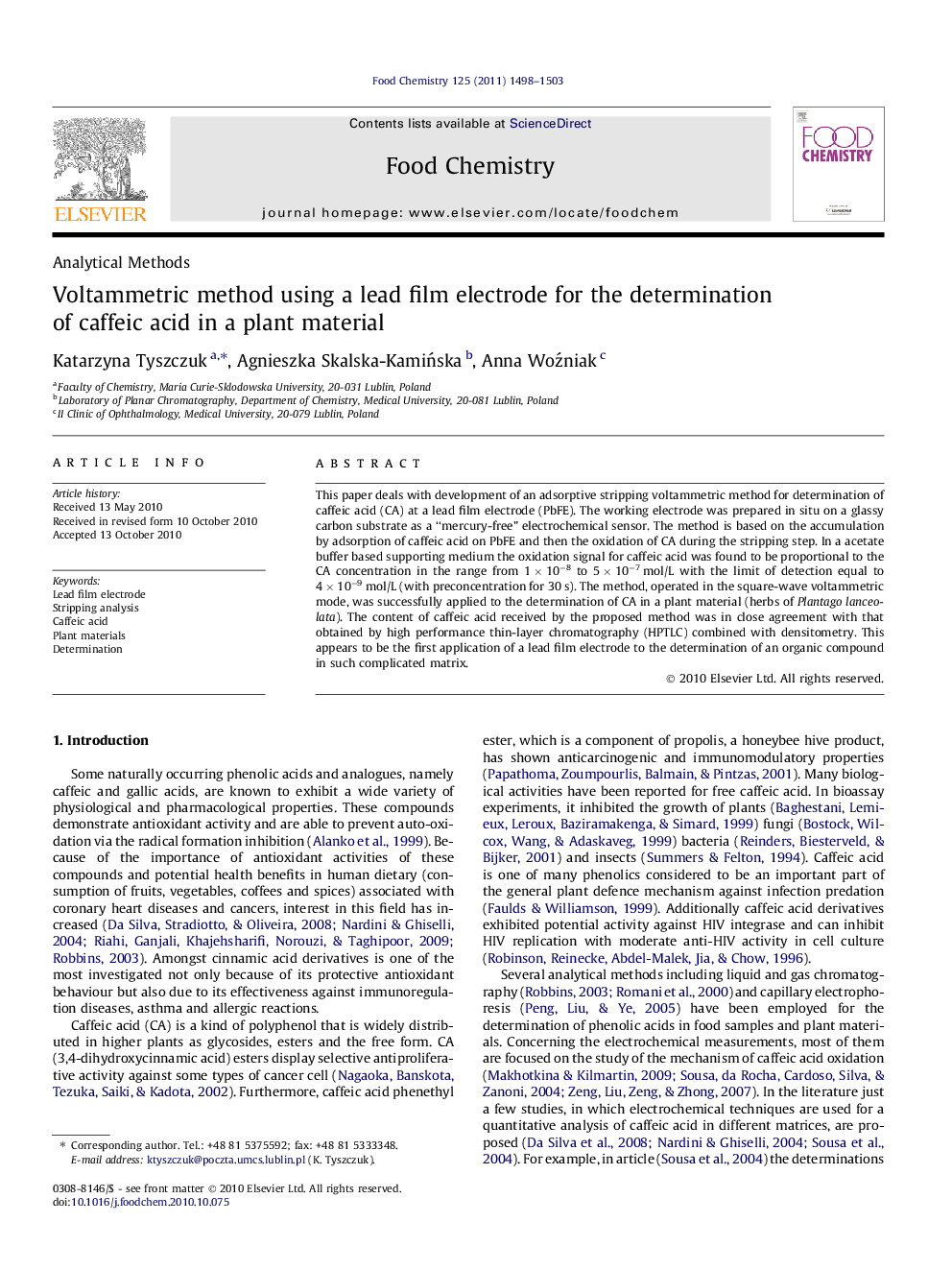| کد مقاله | کد نشریه | سال انتشار | مقاله انگلیسی | نسخه تمام متن |
|---|---|---|---|---|
| 1186519 | 963440 | 2011 | 6 صفحه PDF | دانلود رایگان |

This paper deals with development of an adsorptive stripping voltammetric method for determination of caffeic acid (CA) at a lead film electrode (PbFE). The working electrode was prepared in situ on a glassy carbon substrate as a “mercury-free” electrochemical sensor. The method is based on the accumulation by adsorption of caffeic acid on PbFE and then the oxidation of CA during the stripping step. In a acetate buffer based supporting medium the oxidation signal for caffeic acid was found to be proportional to the CA concentration in the range from 1 × 10−8 to 5 × 10−7 mol/L with the limit of detection equal to 4 × 10−9 mol/L (with preconcentration for 30 s). The method, operated in the square-wave voltammetric mode, was successfully applied to the determination of CA in a plant material (herbs of Plantago lanceolata). The content of caffeic acid received by the proposed method was in close agreement with that obtained by high performance thin-layer chromatography (HPTLC) combined with densitometry. This appears to be the first application of a lead film electrode to the determination of an organic compound in such complicated matrix.
Research highlights
► Deposition of the lead film on a glassy carbon electrode.
► Accumulation by the adsorption of caffeic acid on the lead film electrode.
► Oxidation of caffeic acid during the stripping step.
► Determination of caffeic acid in a plant material (herbs of Plantago lanceolata).
► Comparison of the results obtained by AdSV and HPTLC methods.
Journal: Food Chemistry - Volume 125, Issue 4, 15 April 2011, Pages 1498–1503